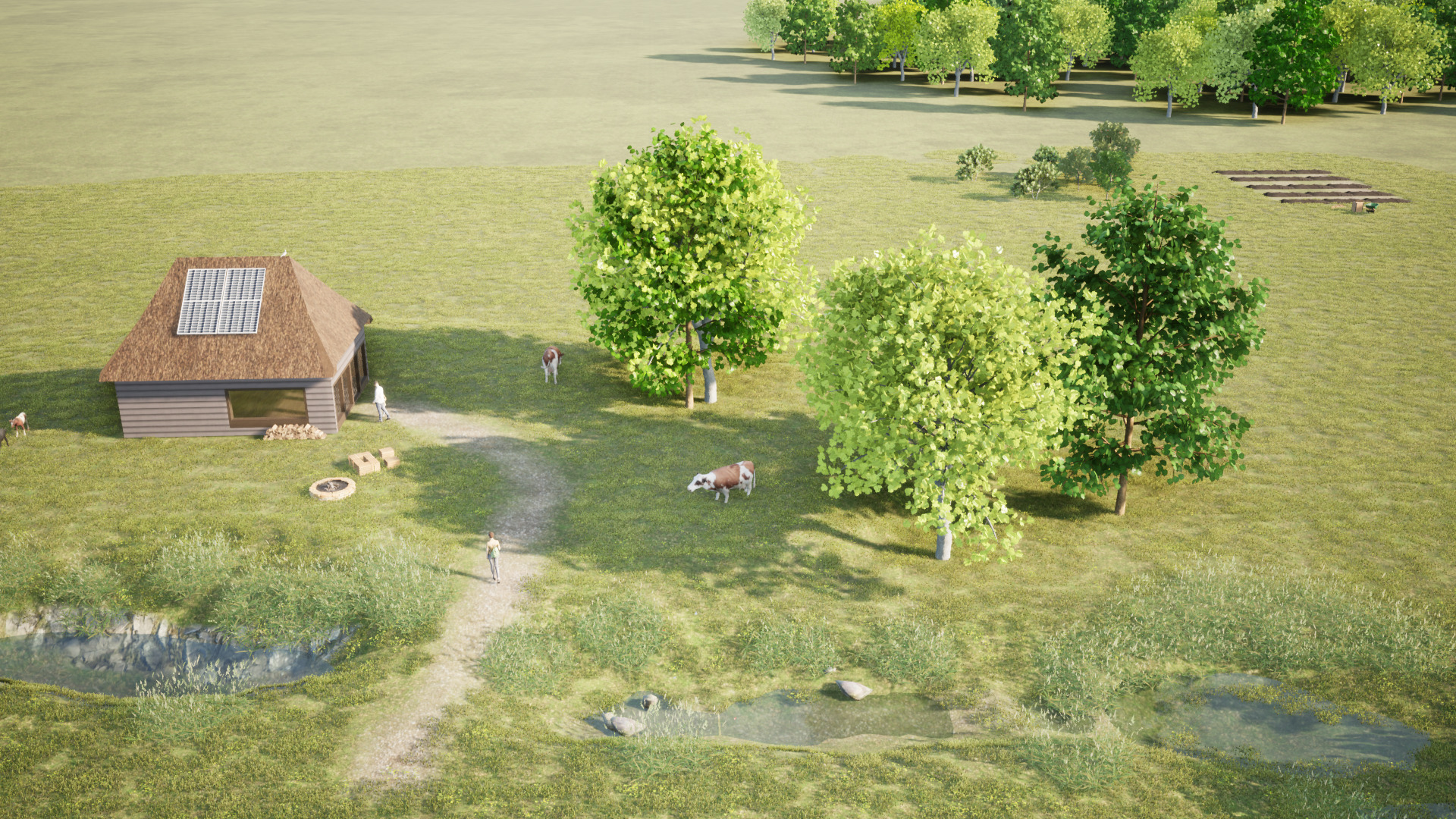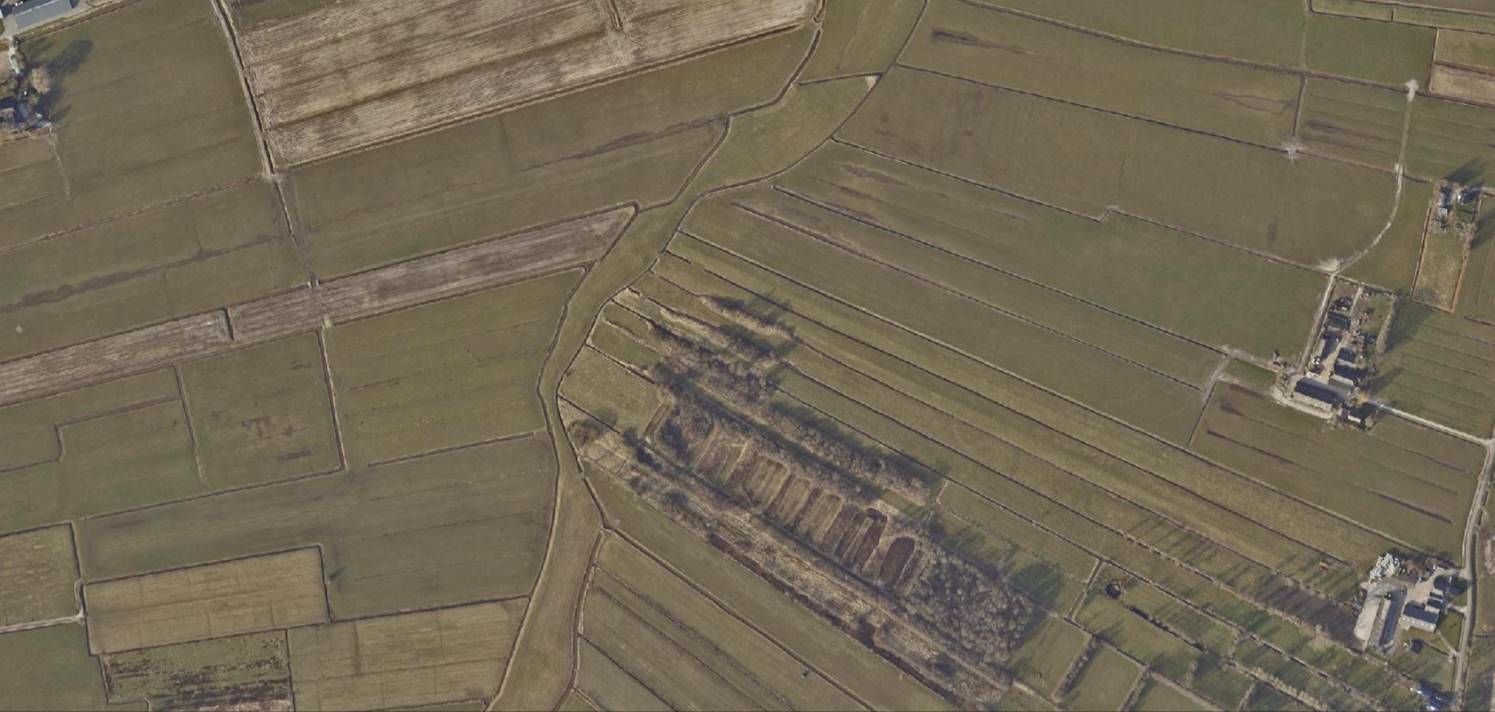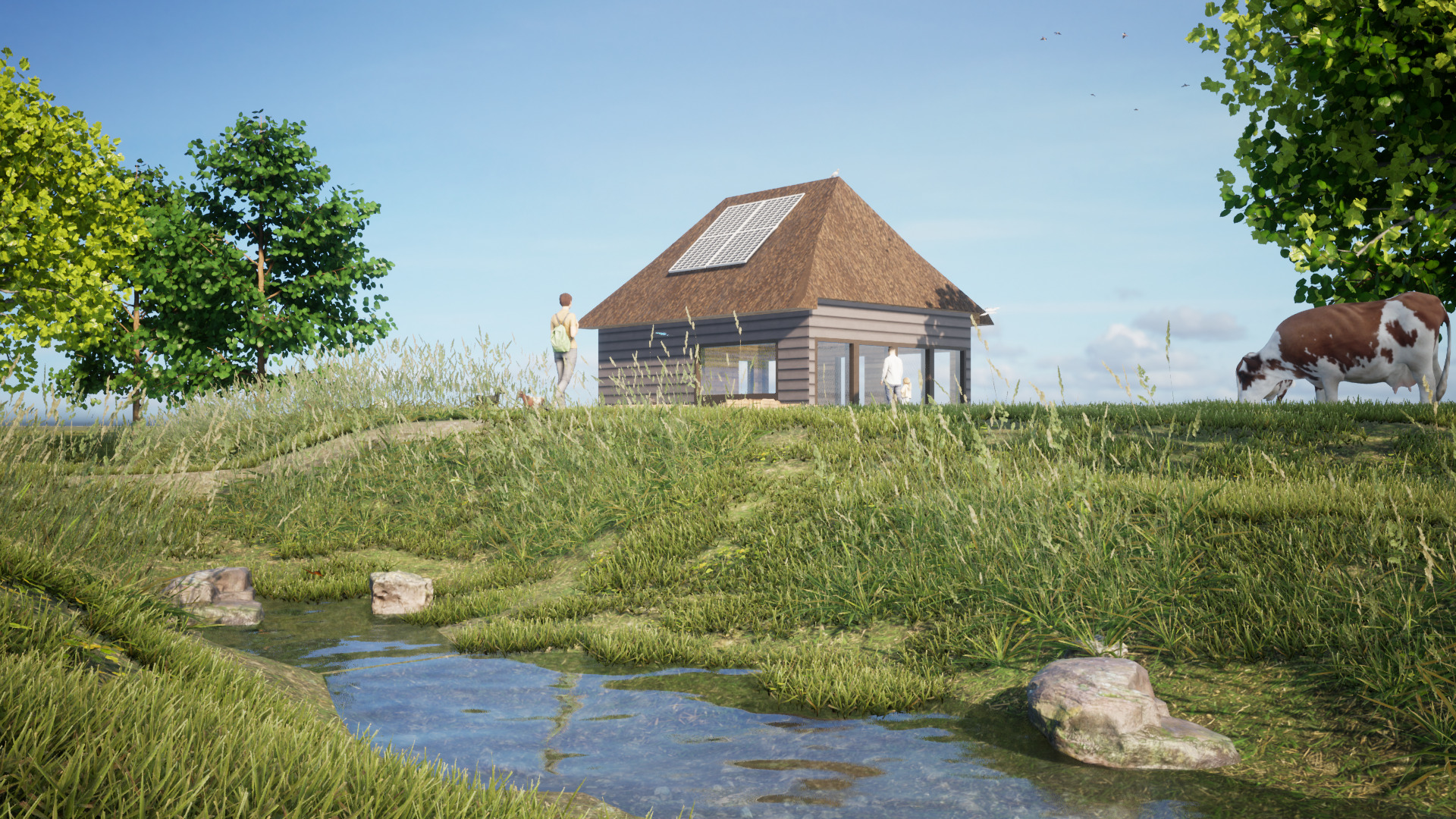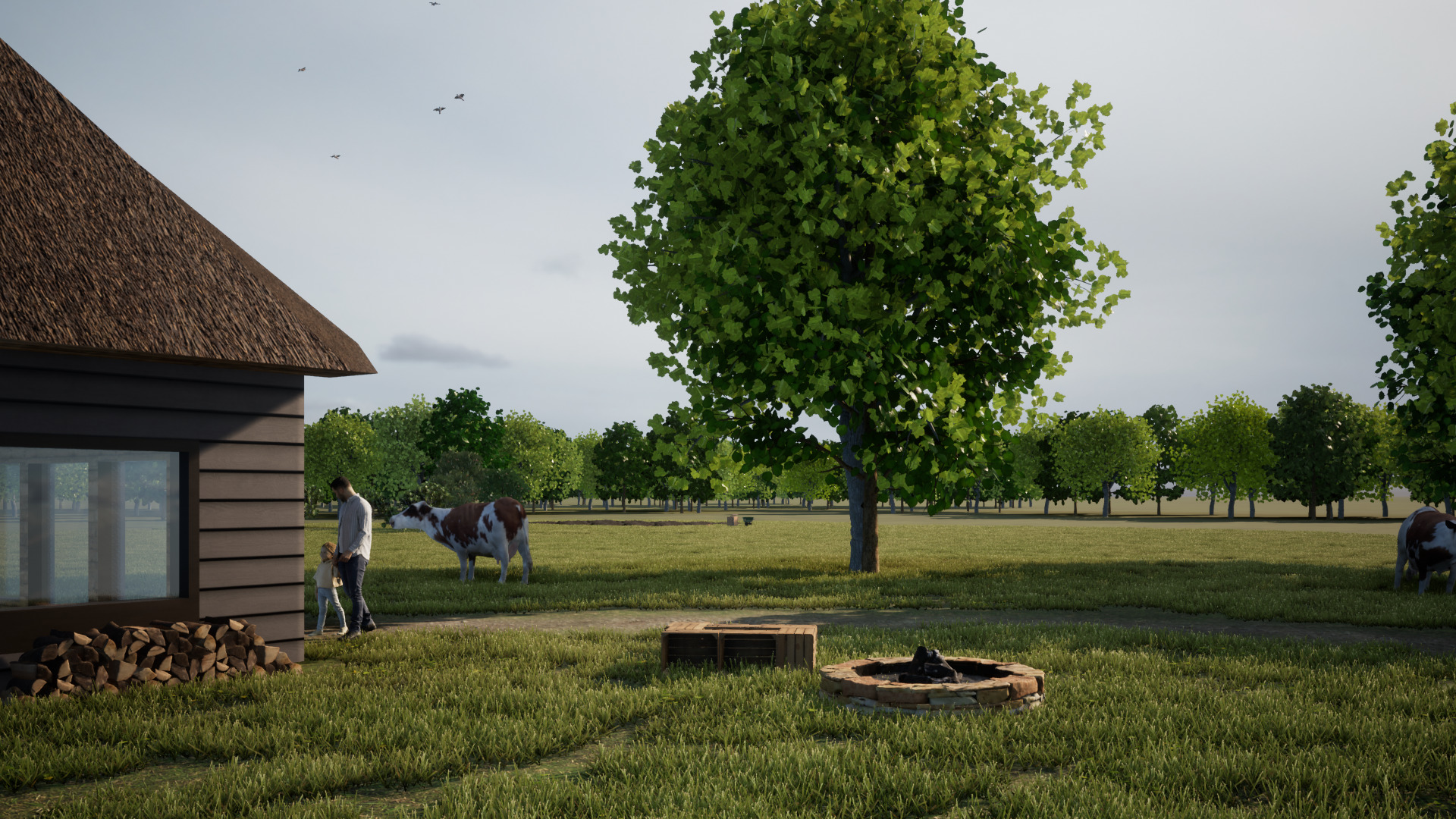Britt Koopmans recently graduated from the Hanze University of Applied Sciences in Groningen (course: Built Environment). She has conducted research into the possibilities of off-grid living in rural areas and wrote an extensive and inspiring thesis about it.
Her supervisor Ron de Vrieze from Entrance (Centre of Expertise Energy in Groningen) is enthusiastic about the result: ‘This research concerns a plot where off-grid workers’ houses and sod huts used to stand near a farm and where the current owner has asked whether off-grid houses can return here. The better built farms always remained standing, but the simple workers’ houses were demolished and disappeared everywhere. I thought that was an interesting case, because it applies to many more situations.’

Rural areas have the future
Why can off-grid living in rural areas be a great success? Britt has an idea: ‘The Netherlands has been struggling with an acute housing shortage for some time due to the growing population and the desire of many to live comfortably and luxuriously in an urban environment. The level and concentration of energy use in cities is also increasing, because people want to live larger and more comfortably and have an increasingly higher energy demand. This can lead to peak loads and congestion in the energy grid. As a result, we sometimes even have problems facilitating the return of self-generated solar energy to producers, because the grid becomes overloaded.’
At the same time, a trend can be seen in which more and more people desire a smaller home in a natural environment: ‘This shift can partly be explained by the housing shortage and the need to find a housing solution outside the urban area. It seems that a turning point has been reached in the ongoing push for larger and more comfortable living. Ecological communities, Tiny Houses and micro homes are becoming increasingly popular.’

Britt’s vision on off-grid living
Britt did formulate a few preconditions that her off-grid system had to meet. She wanted to make the plot attractive for people who want to live in a nature-inclusive environment and be independent of a grid operator. The graduate has also not made use of measures that:
- can only be carried out on a large scale;
- cause damage or disruption to the environment;
- not in line with human needs;
- require a high level of maintenance.
For example, for the waste flows, Britt only included organic waste. She thinks this is logical: ‘Plastics are not discussed. Purchasing this is a conscious choice and can be prevented by purchasing responsibly.’

Off-grid with the whole family, it’s possible!
The research focused on developing an off-grid system design and a layout plan for a half-hectare plot in Doezum for a starting family with two children. The house is approximately 48 m2. Britt wanted to look at the feasibility of off-grid living from all sides: ‘The results include an overview of energy, heat and water demand and an identification of bottlenecks in realizing this project, also with regard to permitting. In addition, the properties of the environment have been identified and research has been conducted into the influence of different weather conditions.
Based on solar panels, wind turbines and water purification systems, a coherent system design has been sought that ensures that the house is self-sufficient in energy, heat and water.’ The measures have been developed in three variants: ‘These have been assessed and a number of measures have also been a cost estimate has been worked out.’

Britt comes to the conclusion that off-grid living is fine in rural areas, but that it is absolutely tailor-made. ‘The off-grid measures must work well together and be well coordinated with each other and the environment.’
If you would like to read the entire thesis, click here:


Leave a Reply